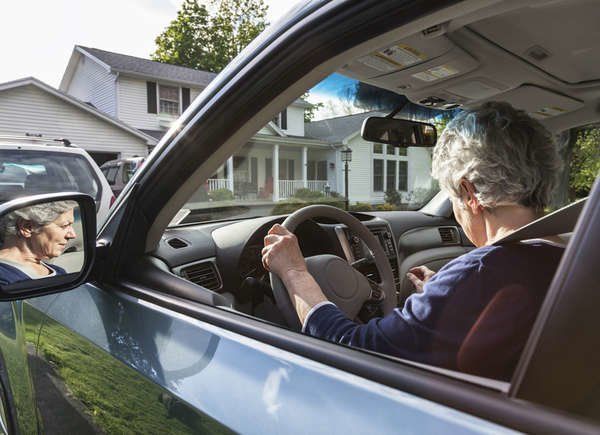
The competition to sell vehicles is now fiercer than ever before! The Covid-19 pandemic has increased competition and changed customers’ buying habits. To stay ahead, knowing and understanding car sales psychology is essential. This article will discuss how to increase vehicle sales at your dealership.
The process of selling cars has evolved rapidly!
The future of automobile sales is changing rapidly. Why? Why? They prefer to begin the process of buying a car online. How can dealers adapt to the digital age?
It used to be that selling cars was a well-oiled process, complete with billboards and print ads. But this is no longer enough. Even if you offer lucrative discounts, you will need more! The reason is that the customer can easily compare all the cars’ prices (and other details) within 1,500 miles. So, even a low-priced car won’t guarantee sales.
Charisma, friendliness, and a pleasant demeanor are essential to selling cars. But what if your customers have yet to come to the dealership? You can’t wait for people to come in. Getting in front of them before they step on your lot is essential. You must increase your marketing and advertising efforts – customers must know the dealership’s services and products.
Remembering your customers’ names is essential
A name is important when you are selling cars. It is essential that your car salespeople learn words and can remember them if you want to increase sales at your dealership. This includes the names of both current and future customers.
Communication with a human touch is vanishing in today’s world. Emails, texts, and other forms of marketing are no longer authentic. A Segment study found that 60% of customers will return to your store if you personalize their shopping experience. Making a good first impression is essential by using a customer’s name and customizing content to match their interests. You can also build trust and rapport by making your customers feel they are more than just an email address or a phone number.
A good car seller will use the customer’s name in their message as soon as they receive an online lead. The salesperson should talk casually as if talking to a close friend. It is essential to make them feel valued, to establish trust, and to get them into the showroom to buy a vehicle.
Make eye contact and build rapport
Stop selling and work on building rapport if you notice that the customer is quiet or uncomfortable. If you continue to sell or push an overwhelmed prospect, you may alienate them and lose the sale.
Ask them instead what they enjoy doing on the weekend, what they do at work, or where they come from. These are easy questions to answer, and do not feel threatening. You can ease into sales by mentioning their favorite makes and models. The conversation will be redirected to the sale, avoiding a cold-feet crisis.
Hold their gaze when the prospect speaks. Please give them a warm and comforting smile while looking directly into their eyes. Make them feel comfortable. They will be put off if you act sarcastically. After that, it won’t be long before they walk away. Some people may find it difficult to maintain eye contact. Be sensitive to the needs of someone avoiding you, and keep a soft gaze.
Treat all customers equally
Refrain from assuming anything about potential clients when they arrive at your dealership. Don’t assume, for example, that if one earns more money, they will invest more. It is essential that they feel involved in the decision-making process when you talk to them. Asking questions and listening to their answers will show that you value them as a part of your purchasing process. Don’t also judge people by their looks. It would be best if you didn’t assume that a customer who wears a suit to the dealership will spend more money than someone wearing cut-offs. Customers wearing cut-off jeans are more willing to pay for their vehicle than their wardrobe. It would be best if you did not make snap decisions.
It is essential to have patience with your customers. This includes those who are reluctant to make financial decisions. It would be best if you were looking for customers who may take you off deals that will close. Tire kickers are what they’re called. They are not the right customer; they need to research and, most importantly, can’t afford your products. It is a warning sign if someone comes into the dealership daily for a whole week and takes test drives in multiple vehicles without making a choice.
Firmly set your price but do not push it
When to start the price discussion and when to begin your sales pitch. You can ask, “Are you ready to purchase this car today?” when you know that the buyer has fallen in love with the car. If the answer is “Yes,” you may discuss cash down, monthly payments, trade-in value, etc. Tell the salesperson to include the dealership’s manager in the conversation so they can help you negotiate the price and maximize dollars for the dealership.
Avoid the hard sell. You may lose the customer if you are consistent. The customer may be interested in purchasing but is afraid to tell the salesperson so they can push them. It is best to state the price upfront to avoid tension and possible haggling. The potential buyer will know the price immediately and can choose whether to purchase the car at that price. It would be best, to be honest with the price you’re willing to accept instead of posting an inflated one.
It takes a lot more patience to sell cars. Selling cars is more than selling books, toys, clothes, or makeup. Customers are cautious before buying any vehicle, whether it is new or used. People want to buy but prefer to be kept from being sold. It’s essential not to come across as desperate. It’s okay if they want to avoid making a quick decision. Tell them to think about it, then make a decision. Send them a video to thank them for visiting your dealership, and tell them how much you are looking forward to their return. Be patient and continue to cultivate relationships. Your efforts will pay off.

















